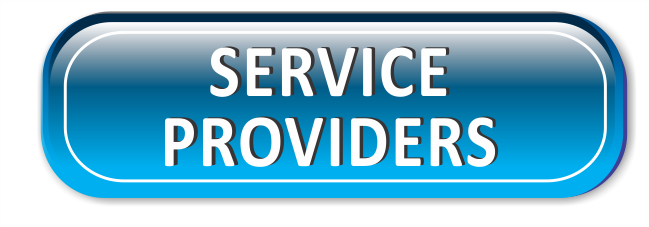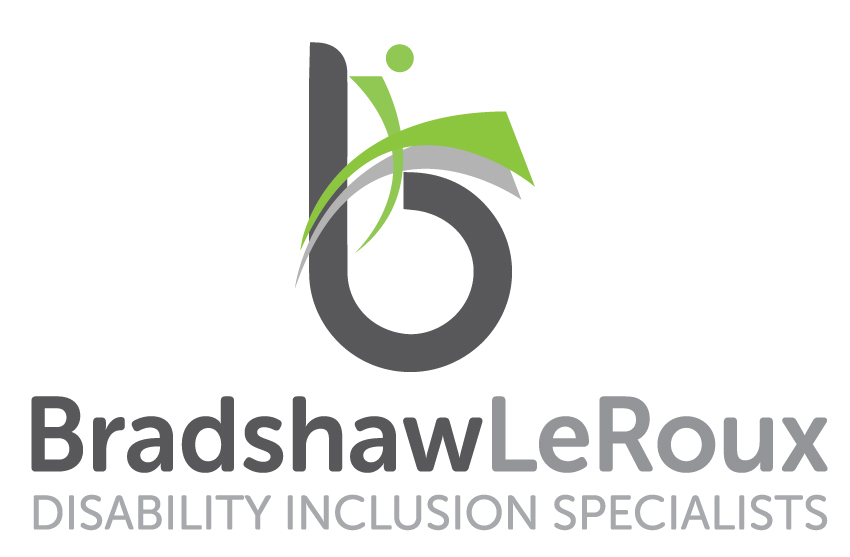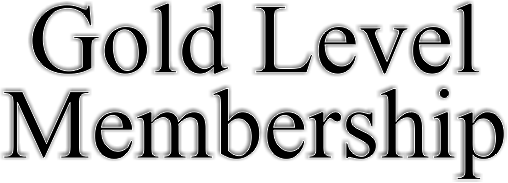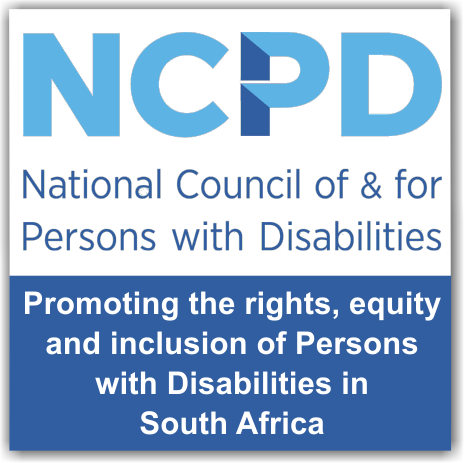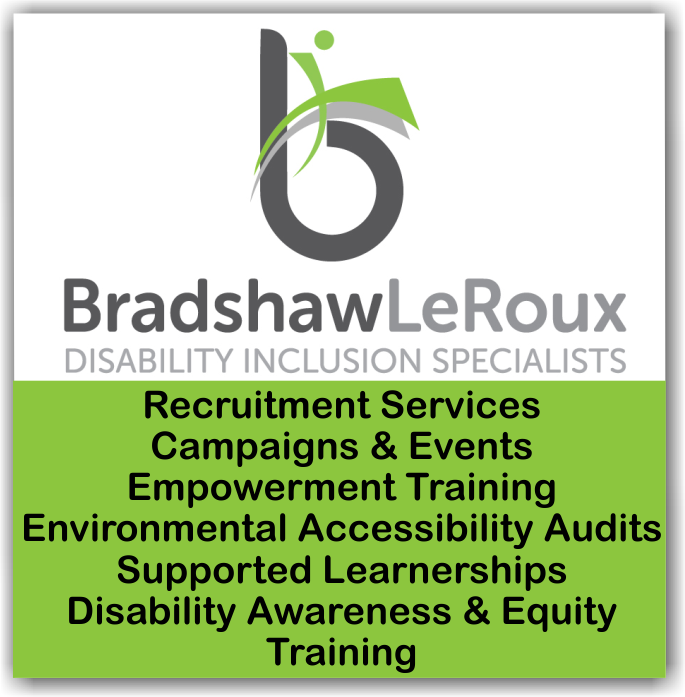Accessible Features & Disabled Parking Discs
Introduction
Persons with disabilities are often excluded from many events, services, information, communication, products and venues because during the planning phases all users were not considered. This can be prevented by including a Universal Access Consultant, who will apply Universal Design Principals during the design phase. Government Regulations have been put in place in South Africa and around the world to try to make public places more accessible to persons with disabilities, including persons with Mobility Impairments. These government regulations are known as Accessible Features and they are meant to ensure that accommodation and transport is accessible and that equal opportunities and rights are available for persons with disabilities. By including Universal Access Consultants throughout the project as well as in the design phase, we can make sure that environments are truly accessible.
The Government often makes laws that insure that new buildings are designed & built with certain features to make them wheelchair friendly. These are known as The National Building Regulations and Building Standards Act, which was amended and published by the Department of Trade and Industry in May 2008. Some parts of the Act Part S deals with facilities for persons with disabilities and directly affected the building industry. They include information about:
- Disabled Toilets
- Ramps
- Disabled Parking Bays
- Disabled Bays in Movie Theaters, Sports stadiums & Music Concerts
A noticeable change recently in some parts of the world is the installation of elevators, automatic doors, wide doors and corridors, transit lifts, wheelchair ramps, curb cuts, and the elimination of unnecessary steps where ramps and elevators are not available, allowing persons who use wheelchairs and other Mobility Aids to use public sidewalks and public transit easier and safely.
There are however still unfortunately many buildings and most houses in South Africa which are not designed and built to accommodate wheelchair users or the elderly. The owners of these buildings and houses may therefore be challenged by the need to find architects and renovators familiar with accessible design issues in order to make them accessible.
All is not lost, there are various Organizations and Companies that can assist with Universal Design and Access to make sure that persons with disabilities are not excluded from any events, services, information, communication, products and venues. In the article below, we will discuss the Accessible Features that have been introduced in order to make public places more accessible to persons with Mobility Impairments, as well as the companies and organizations that can assist you to ensure that your business is accessible and safe, giving equal opportunities and equal rights for persons with disabilities.
Organizations & Companies That Can Assist With Universal Design & Access
There are now various Organizations and Companies that specialize in Universal Design and Access and can advise you on how to adapt your building & environment to make sure that persons with disabilities have equal rights and no loss of dignity. The National Council of and for Persons with Disabilities (NCPD), Bradshaw LeRoux Consulting, The QuadPara Association of South Africa (QASA) and DiSA specialize in Universal Design and Access to make sure that persons with disabilities are not excluded from any events, services, information, communication, products and venues. These Organizations and Companies can assist in different ways including: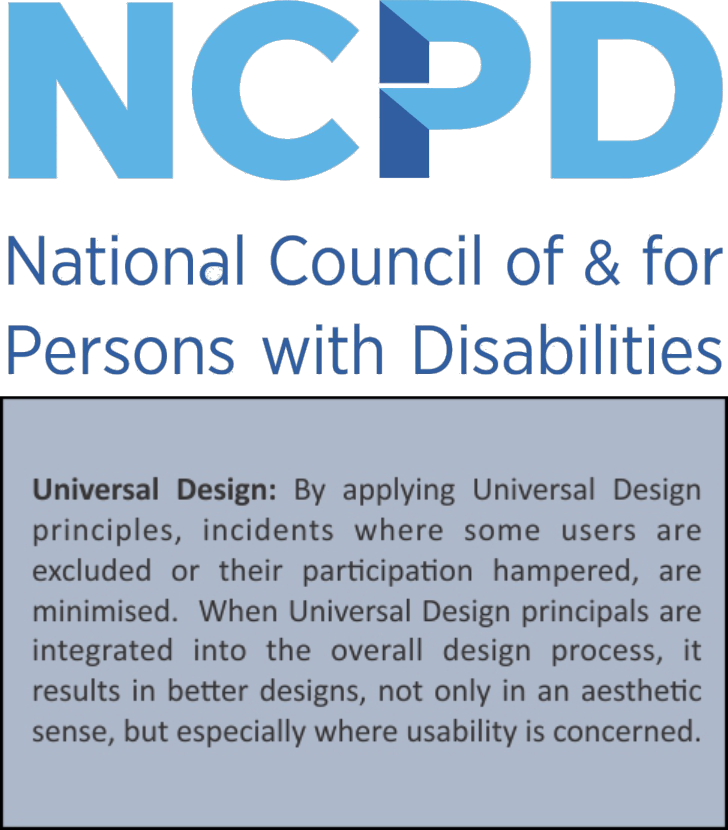
The National Council of and for Persons with Disabilities (NCPD): believe that this can be prevented by applying Universal Design Principals during the design phase and they therefor offer the following services to assist:
- Workshops for architects, developers and other building professionals to develop an understanding of universal design and access.
- Facilitating access audits for new or existing buildings; echo e-access for the natural and communication environment. Audits are followed by a report indicating shortfalls and recommendations.
- Marketing of facilities that are accessible to persons with disabilities
Contact Fanie Swanepoel or Danie Marais for more information on Tel: +27 11 452 2774 or email them on: fanies@ncpd.org.za or danie@ncpd.org.za
Bradshaw LeRoux Consulting: Bradshaw LeRoux Consulting conduct Environmental Accessibility Audits designed to identify environmental barriers that could hinder access for Persons with a Disability. Our consultants will review your site, note potential barriers from a functional and safety perspective, and propose cost-effective solutions which can be actioned within short, medium and longer term timeframes. Our reports are practical in nature, specific in the solutions offered, and allow for ease of use by all. Relevant to all environments, from corporate offices, manufacturing or industry sites, education facilities or hospitality environments, we can assist.
QASA: The QuadPara Association of South Africa (QASA) is a non-profit organisation (NPO 000-881) of Quadriplegics and Paraplegics in South Africa. QASA’s mission is “to improve lives by securing resources to advocate, educate, capacitate, support and mobilize”. QASA’s vision is that “all quadriplegics and paraplegics will live their lives to their full potential”. QASA develops products, programmes and services for quadriplegic and paraplegic members to build their capacity and ensure opportunities for societal integration and empowerment.
will live their lives to their full potential”. QASA develops products, programmes and services for quadriplegic and paraplegic members to build their capacity and ensure opportunities for societal integration and empowerment.
These Services include but are not limited to Access Audits:
An access audit is a form of inspection that can be used to assess the ease of access to, and ease of use of an environment (such as a building or landscape), a service, or a facility, by people with a range of access impairments.
Everyone has the right to be able to fully participate within society, and the built environment and accessibility plays a vital role in achieving this goal. Persons with mobility impairments are faced with physical barriers that exclude them from societal integration, be that in the workplace, educational & recreational facilities.
Bearing this in mind it is of utmost importance that we make our spaces accessible, it is not only an issue of equality and justice, but it makes good business sense, and adds to contributing to the development of a more inclusive and equal society.
Access Audits identify features including:
- The current accessibility of the building
- Areas for improvement (e.g. no accessible parking in the car park or the door in the accessible toilet on the ground floor is incorrectly located and therefore the building is inaccessible)
- Good/bad practice in relation to facilities management that an organisation has in place; positive accessibility features (e.g. counter tops at reception, good use of lighting and colour throughout building, signages)
Benefits of Accessible Environment:
- Increases the pool of potential new employees that an employer can tap into
- Retain existing employees who may acquire a disability through an accident / medical condition
- Enables more persons with disabilities to enter the building and /or use the services
- Improves overall safety of buildings, which has a direct impact on the number of accidents taking place and therefore the cost of insurance premiums.
Click on the link above to find out more about "Access Audits", or visit our Organizations - QASA Page to find out more about QASA and the other Projects and Services that they provide, or their website at www.qasa.co.za.
These Organizations and Companies listed above which specialize in Universal Design and Access will follow those standards set by "The National Building Regulations and Building Standards Act" to make sure that persons with disabilities are not excluded from any events, services, information, communication, products and venues.
The National Building Regulations and Building Standards Act
Some laws regarding Persons with disabilities, which are stated in "The National Building Regulations and Building Standards Act" include:
- Persons with disabilities should be able to safely enter the building (Ramps) and be able to safely use all the facilities within it – specifically toilets. (Disabled Toilets)
- There must be a means of access that is suitable for people with disabilities to use. In addition, access must be available from various approaches of the building via the main entrance and any secondary entrances, and should lead to the ground floor.
- There must be a means of egress (a point of departure) that is suitable for people with disabilities to use in the event of any sort of emergency. This relates to any sort of emergency, but in addition, a further clause states that departure routes (or egress) must also be designed in accordance with Part T of the regulations, namely the section that relates to Fire Protection.
- Lifts in buildings must be able to serve the needs of disabled people. This includes ensuring that any commonly used “path of travel” MUST be free of any sort of obstacles that would limit, restrict or endanger people with disabilities who use that route. There must also be absolutely no obstacles that will prevent people with disabilities from accessing facilities within the building. The regulations refer specifically to people with impaired vision, but clearly they also relate to people in wheelchairs, or people who have trouble walking freely.
- Buildings that incorporate halls or auditoriums for public use are obliged to ensure that a reasonable percentage of space is available for people in wheelchairs or other “assistive devices”. (Disabled Bays in Movie Theaters, Sports stadiums & Music Concerts)
- The National Building Regulations also state that where there is parking available for more than 50 motor vehicles, there must be parking facilities that accommodate disabled persons. There is also an obligation to ensure that persons with disabilities are provided with a suitable means of access from the parking area to the ground floor – or storey – of the building. (Disabled Parking Bays)
Signage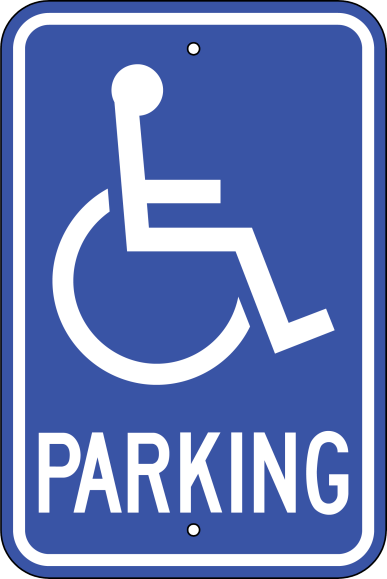
The International Symbol of Access (ISA), also known as the (International) Wheelchair Symbol, consists of a blue square overlaid in white with a stylized image of a wheelchair. It is maintained as an international standard, ISO 7001 image of the International Commission on Technology and Accessibility (ICTA)
The symbol is often seen where access has been improved, particularly for wheelchair users, but also for other disability issues. Frequently, the symbol shows the removal of environmental barriers, such as steps, to help the disabled, elderly, parents with baby carriages, and travellers. Universal design aims to obviate such symbols by creating products and facilities that are accessible to nearly all users from the start. The wheelchair symbol is "International" and therefore not accompanied by Braille in any particular language.
Specific uses of the ISA include:
- Marking a parking space reserved for vehicles used by people with disabilities/blue badge holders
- Marking a vehicle used by a person with a disability, often for permission to use a space
- Marking a public lavatory with facilities designed for wheelchair users
- Indicating a button to activate an automatic door
- Indicating an accessible transit station or vehicle
- Indicating a transit route that uses accessible vehicles
Providing clear and visible marking by using this accessible disabled sign is essential in making facilities visible for those who need them. The South African Government through The South African National Standard for Building Regulations therefore makes laws that insure that new buildings are designed & build with a certain regulations, which includes regulations on Signage.
Facilities that are included in a building specifically for use by persons with disabilities, such as wheelchair-accessible parking spaces, wheelchair-accessible toilets, and platform or stair lifts, shall be indicated by the international symbol for access.
Disabled Toilets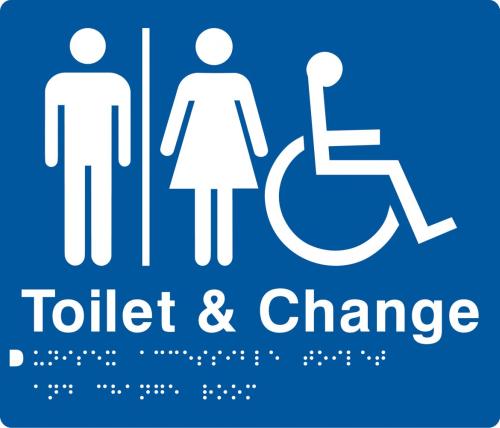
An accessible toilet is a special toilet designed to accommodate people with physical disabilities. They are sometimes known as Disabled Toilets.
Public toilets can present accessibility challenges for people with disabilities, such as those people in wheelchairs. Stalls may not be able to fit a wheelchair, and transferring between the wheelchair and the toilet seat may pose a challenge. Accessible toilets are designed to address these issues by providing more space and bars for users to grab and hold during transfers.
The South African Government through The South African National Standard for Building Regulations makes laws that insure that new buildings are designed & build with a certain amount of Disabled Toilets.
In any building where facilities for persons with disabilities are required in terms of Regulation S1, there shall be one or more toilets or unisex toilet facilities suitable for use by wheelchair users.
People with disabilities should be able to safely enter the building (Ramps) and be able to safely use all the facilities within it – specifically toilets.
These Disabled Toilets:
- follow certain regulations
- Need larger floor space than other cubicles to allow space for a wheelchair to maneuver. This space is also useful for people who are not necessarily wheelchair users, but still need physical support from someone else.
- Have a wheelchair-height changing table is also recommended, but remains rarely available. Accessible changing tables are low and accessible to a wheelchair user, and long enough for a caretaker to change an older child or adult with a disability.
- Have a wheelchair-height toilet, to help the user on and off the toilet, with handles (grab bars)
- Have an emergency alarm, in the form of a red cord that reaches the ground, connected to a buzzer and a flashing red light
- Have a wheelchair-height sink and hand dryer.
- Have wheelchair-width doors leading to it, allowing sufficient space for a wheelchair when a door is open.
Ramps
A wheelchair ramp is an inclined plane installed in addition to or instead of stairs. Ramps permit wheelchair users, as well as people pushing strollers, carts, or other wheeled objects, to more easily access a building.
A wheelchair ramp can be permanent, semi-permanent or portable. Permanent ramps are designed to be bolted or otherwise attached in place. Semi-permanent ramps rest on top of the ground or concrete pad and are commonly used for the short term. Permanent and semi-permanent ramps are usually of aluminum, concrete or wood.
Ramps must be carefully designed in order to be useful. Many jurisdictions have established minimum widths and maximum slopes. A less steep rise can be easier for a wheelchair user to navigate, as well as safer in wet or icy conditions.
The South African National Standard for Building Regulations state that Wheelchair ramps (or other ways for wheelchair users to access a building, such as a wheelchair lift) are required in new construction for public accommodations in South Africa. They also state that these wheelchair Lifts & Ramps must meet certain regulations & requirements.
People with disabilities should be able to safely enter the building (Ramps) and be able to safely use all the facilities within it – specifically toilets. (Disabled Toilets)
There must be a means of access that is suitable for people with disabilities to use. In addition, access must be available from various approaches of the building via the main entrance and any secondary entrances, and should lead to the ground floor.
There must be a means of egress (a point of departure) that is suitable for people with disabilities to use in the event of any sort of emergency. This relates to any sort of emergency, but in addition, a further clause states that departure routes (or egress) must also be designed in accordance with Part T of the regulations, namely the section that relates to Fire Protection.
Disabled Parking Bays & Disabled Parking Discs
One of the many "Accessible Features" that the government has introduced, is "Wheelchair Parking." The Government has introduced certain regulation that state, how many of these "Wheelchair Parking Bays" must be available & the size of the "Wheelchair Parking Bays"
The National Building Regulations state that where there is parking available for more than 50 motor vehicles, there must be parking facilities that accommodate disabled persons. There is also an obligation to ensure that persons with disabilities are provided with a suitable means of access from the parking area to the ground floor – or storey – of the building.
These parking bays are not only close to the entrance, but are also wider than the 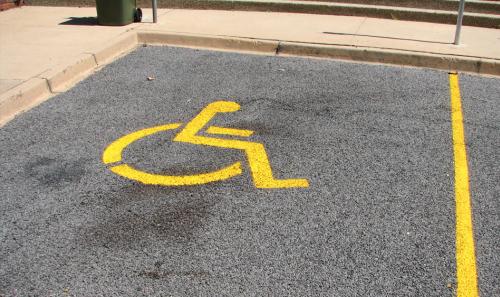 average parking bay. Wheelchair parking bays are traditionally 3500mm wide to cater for a wheelchair user who needs the extra space to enter or exit the vehicle, thus enabling:
average parking bay. Wheelchair parking bays are traditionally 3500mm wide to cater for a wheelchair user who needs the extra space to enter or exit the vehicle, thus enabling:
- a wheelchair user to transfer into their wheelchair from their car.
- It enables the helper of a severely disabled person to park the wheelchair next to the car so that they can lift the person from the car and place him into the wheelchair.
- It also enables the helper of a severely disabled person to offload a person from a kombi in a wheelchair down ramps or with a wheelchair lift.
By having this extra space helps these transfers to be done safely for the wheelchair user & helps prevent the vehicle in the parking space next door from getting damaged.
Accessible Routes & Doorways
An important part of accessibility is not only accessible parking spaces, passenger loading zones, ramps, Disabled Toilets & Lifts, etc but also insuring that there are various accessible routes from the public streets onto the pavements & to the accessible building entrance and to the facilities inside the building & visa versa. Appropriate accessible routes should also be made available for emergency exits. Accessible Routes include:
- Ramps on & off the pavement
- Wide enough walkways for a variety of size wheelchairs
- No obstacles on these pathways
- Wide doorways & turning areas, etc.
The South African Government through The South African National Standard for Building Regulations passes laws that insure that new buildings & structures are designed & build with a certain regulations, which includes regulations on Accessible Routes.
There must be a means of access that is suitable for people with disabilities to use. In addition, access must be available from various approaches of the building via the main entrance and any secondary entrances, and should lead to the ground floor.
There must be a means of egress (a point of departure) that is suitable for people with disabilities to use in the event of any sort of emergency. This relates to any sort of emergency, but in addition, a further clause states that departure routes (or egress) must also be designed in accordance with Part T of the regulations, namely the section that relates to Fire Protection.
Lifts/Elevators
Thanks partly to the disability rights movement we have seen an improvement in building accessibility. With the installation of elevators or lifts buildings are now accessible even for those in a wheelchairs.
A lift (or elevator) is a form of vertical transportation between building floors, levels or decks, commonly used in offices, public buildings and other types of multi-storey accommodation. Lifts can be essential for providing vertical circulation, particularly in tall buildings, for wheelchair and other non-ambulant building users and for the vertical transportation of goods. Some lifts may also be used for firefighting and evacuation purposes.
The South African Government through The South African National Standard for Building Regulations therefore makes laws that insure that new buildings are designed & build with a certain regulations, which includes Lifts & the regulations set aside for these Lifts.
There must be a means of egress (a point of departure) that is suitable for people with disabilities to use in the event of any sort of emergency. This relates to any sort of emergency, but in addition, a further clause states that departure routes (or egress) must also be designed in accordance with Part T of the regulations, namely the section that relates to Fire Protection.
Lifts in buildings must be able to serve the needs of disabled people. This includes ensuring that any commonly used “path of travel” MUST be free of any sort of obstacles that would limit, restrict or endanger people with disabilities who use that route. There must also be absolutely no obstacles that will prevent people with disabilities from accessing facilities within the building. The regulations refer specifically to people with impaired vision, but clearly they also relate to people in wheelchairs, or people who have trouble walking freely.
Disabled Seating In Auditoriums, Grandstands & Halls
In South Africa & around the world buildings such as Auditoriums, grandstands, halls & sports stadiums are made wheelchair friendly by adding among other things, wheelchair platforms, so that wheelchair users can enjoy the event from their wheelchairs & also have a clear view of the stage, field, screen, etc.
Buildings where these "platforms" are build include:
- Movie Theaters
- Sports Stadiums
- Music Concerts, etc
The South African Government through The South African National Standard for Building Regulations makes laws that insure that these type of buildings are designed & build with these wheelchair bays/platforms & that they meet certain regulations.
Buildings that incorporate halls or auditoriums for public use are obliged to ensure that a reasonable percentage of space is available for people in wheelchairs or other “Assistive Devices”. (Disabled Bays in Movie Theaters, Sports stadiums & Music Concerts)
Links
- Building Regulations for facilities for Disabled Pdf.
- Standard Electrical, Mechanical And Architectural Guideline For The Design Of Accessible Buildings (Facilities For Disabled Persons)
To find Companies and Organizations that can assist you, visit our "Services & Service Providers" Search Facility. If you require any Products listed on this page, visit our "Products" search facility.o find Companies and Organizations that can assist you.

